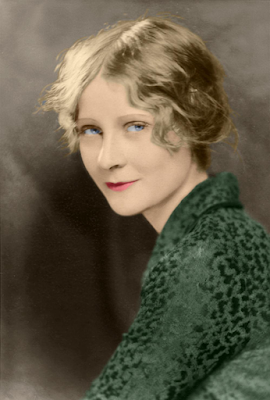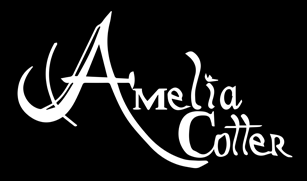Note from Amelia: Welcome back Scott Markus, fellow author and storyteller, tour guide, podcast host, presenter, investigator, and friend. I had the honor of being interviewed on Scott's podcast, The Fantastic Story Society, in 2019. For the past two weeks and this week, Scott is sharing his perspective on the art of storytelling, particularly the delicate art of ghost-storytelling to skeptics, while sharing a few of his own ghost stories along the way. Scott also created a video version of this fantastic article series, which can be viewed here:
This is the final installment in a series that centers around telling ghost stories to skeptics and the lessons I’ve learned in the process as a storyteller and tour guide. In these posts you hear some real ghost stories and the sometimes outlandish ways people attempt to pour cold water on them.
Before jumping into one of my favorite personal ghost stories I’ve experienced, I want to point out that one of my very best friends is an atheist. He doesn’t believe in anything spiritual and, by extension, doesn’t believe that ghost stories are fact-based. To keep the friendship going, we pretty much just avoid the topic. However, we were recently around a bonfire and the whiskey was flowing, so we decided to get into it.
 |
| The old “Hollywoodland” sign overlooking Hollywood in Los Angeles, California. |
I believe there are several different types of paranormal phenomena, coming from several causes. I believe many are part of earth science or biology that we just don’t understand yet, but I do believe there is a spiritual life after death element for conscious hauntings. Naturally, he does not believe in conscious hauntings, but his problem with “the paranormal” is that he doesn’t believe anything on earth is unexplainable. There may still be some mysteries on earth, but science will be able to solve them all in time.
When you look at it through that scope, we are very nearly on the same page. I doubt serious future scientific projects and university studies will ever strongly focus on investigating the paranormal, but if they did, I think science could teach us a lot. Until then, it’ll just be up to us, our investigations, and our less-than-scientific toys to go out into the field and record as much data as we can observe.
The Hollywood Sign’s Tragic Tale and the Open-Minded Skeptic
Most of you may have heard the story of the “failed” actor who died by suicide jumping from the Hollywood sign, back when it still read “Hollywoodland.” There is a lot more to the story, and I always feel a sense of obligation to tell a more complete version of Peg Entwhistle’s life and death. Even the recent Netflix series Hollywood missed the opportunity to tell her story more fully.
Peg Entwhistle wasn’t simply an actor who couldn’t hack it in Hollywood and killed herself. She was an established and successful Broadway actor on the East Coast, who inspired Bette Davis to get into acting. She decided to try to take her career to the next level and try her hand at Hollywood. At this time, actors were leaving the stage for the screen in rapid succession, to the dismay of the theater companies they were leaving behind. Trying to make that transition to the screen essentially put actors on a sort of “do not hire” list within the world of theatre. There’s speculation that when Peg got her small film role, it effectively prohibited her from being able to return to her life on stage. It was movie industry or bust for her.
 |
| Accomplished stage actor Peg Entwhistle, whose tragic death has become integral to Hollywood legend and lore. |
It is true that she was cast in, and almost entirely cut out of, an RKO Studios film, Thirteen Women. It should be noted that Peg is still in the film while Woman #12 and Woman #13 were cut from the film entirely (how did they not rename it to Eleven Women?).
One night in 1932 she left her uncle’s house on Beachwood Drive, telling him that she was going to walk down to the drug store. Instead, she embarked on 4.5-mile hike up into Griffith Park where she reached the Hollywood sign and located a workman’s ladder that was propped up against the 50-foot-tall letter “H.”
Taking one last look down onto Hollywood, ironically with the RKO Studios Headquarters (currently the Pantages Theater) directly in front of her, she leapt to her death. Also, what’s usually not reported accurately, is that she did not die instantly. The fall was approximately 150 feet into a wooded ravine that resulted in a crushed pelvis, which left her immobilized and dying slowly.
What’s commonly observed over the last 90 years is the vision of Peg on her death march up Beachwood Drive, through Griffith Park and to the Hollywood sign. Even people visiting the Griffith Observatory have looked along the mountain’s ridge to the Hollywood sign where they see a figure take a suicidal leap. Authorities are called, search and rescue crews arrive, but a body is ever recovered.
I told the story to a skeptical friend in Los Angeles as an example of a residual hunting. I explained that the concept isn’t that this woman is continuing to kill herself over and over again, but for whatever unknown reason, the intensity of her emotional turmoil has somehow scarred the land where this event took place. Today, countless unsuspecting bystanders are able to catch a glimpse of the replay of this event. To my surprise, my skeptical friend said, “I can see that.”
In the span of one story, this person went from being a non-believer regarding everything paranormal, to being fully open to one of the most common types of hauntings—the residual haunting.
To continue with my own experience here, there’s a great group called GHOULA (Ghost Hunters of Urban Los Angeles) that conducts all sorts of paranormal meetups throughout Southern California. Each September, on the anniversary of Peg’s suicide, they organize a hike up to the Hollywood sign. I partook in the event in 2013. While I didn’t believe there was a conscious haunting at this site, I figured since I was heading up there anyway, I might as well bring along some ghost hunting gear!
While several small things happened throughout the night, there is one moment that still blows my mind. We waited for most of the group to retreat down the mountain at sunset. All that remained was me and three other people. By sheer coincidence, one of the members of our small group worked at Warner Bros. Studios, which is now the studio that owns the rights to Thirteen Women. Attempting to appeal to the driven actor, during an EVP session, I mentioned, “Our friend here works at Warner’s. It’s still a big production company doing huge pictures. Would you be interested in meeting more people that work at Warner Bros.?”
 |
| A hike to the Hollywood sign on the anniversary of Peg Entwhistle’s death produced an unmistakable spirit voice. Photo by Scott Markus. |
But that wasn’t all! For the next minute and a half, you can hear someone slowly breathing in and out, as if their lips were nearly pressed against the microphone of the recorder. All of this is on video, and you could see that the recorder was held at about waist level in the middle of our group—no one was near the microphone. The vocal EVP and somewhat unsettling breathing were not picked up by any camera mics, just the voice recorder.
Amazingly, Peg Entwhistle’s biographer, James Zeruk, Jr., who was in the process of working on a book about Peg’s life (not a paranormal one), reached out to me and, without solicitation, said, “That was absolutely Peg’s voice you captured.” His book, Peg Entwistle and the Hollywood Sign Suicide: A Biography, was released shortly after this investigation. (The investigation video can be viewed at: www.youtube.com/watch?v=TRSsyoI4RkU.)
Lessons to Take Away from the Experience
While a lot of the previous “lessons” involve making the best of a bad situation or knowing how to not get mired down in someone else’s chaos, this wonderful story shows me that sometimes people might assign themselves to a specific affiliation, but actually don’t have strong convictions behind it. In fact, they may be completely open to taking in new information and making new decisions. The lesson here for me is to remember that as much as I am open to having my mind changed and having my viewpoints challenged, there are other people out there who are still excited about learning and growing as well.
“Telling Ghost Stories to Skeptics, Part 3,” Copyright 2020 Scott Markus

No comments:
Post a Comment